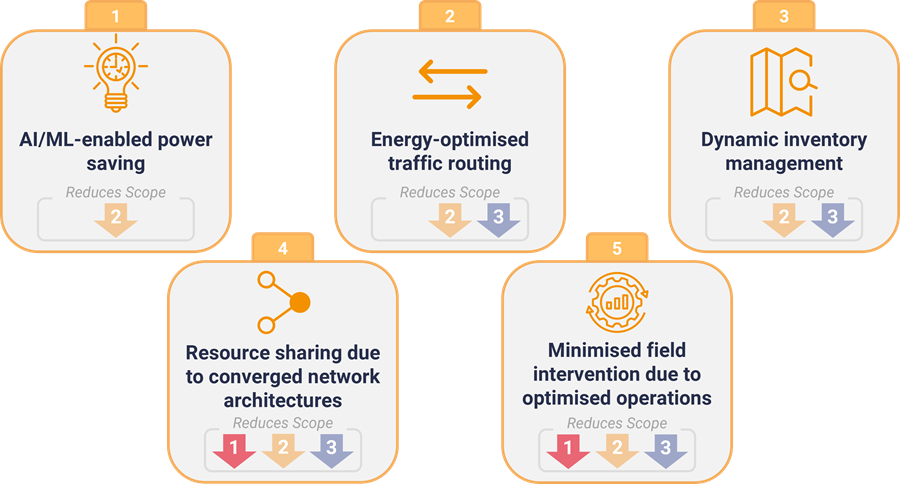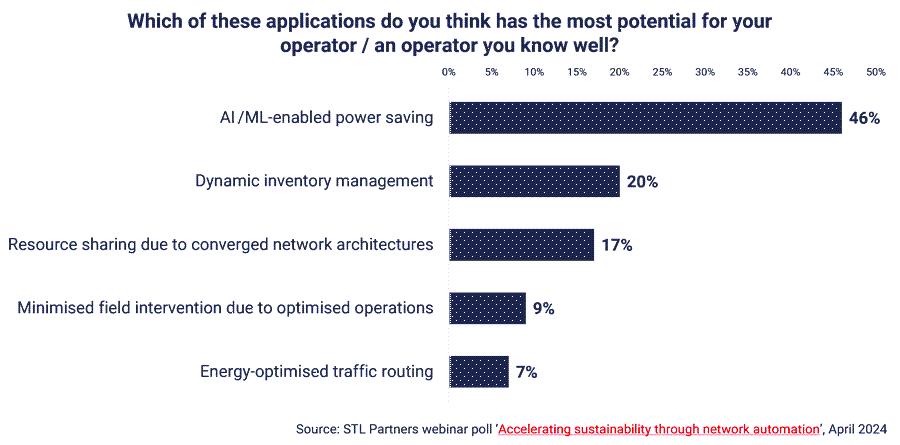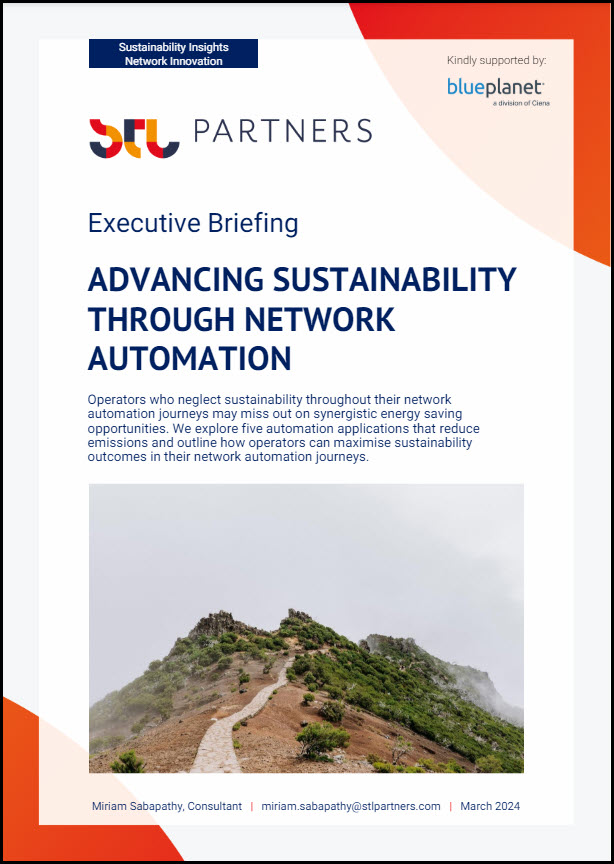Accelerating sustainability through network automation
How is network automation helping operators meet their sustainability targets? Miriam Sabapathy, Consultant at STL Partners, explains with findings from a recently published report and takeaways from a recent webinar featuring Balaji Subramaniam, Director of Product Line Management at Blue Planet, and panelists from CityFibre and Orange.
One of the major findings of STL’s research and results was that most operators still treat automation and sustainability as separate endeavors and view any sustainability benefits merely as a positive by-product. However, to meet their ambitious sustainability goals and respond effectively to external pressures, STL recommends that operators proactively integrate sustainability considerations into their automation strategies to truly leverage the benefits.
Second, where operators are integrating automation into their sustainability initiatives, the research found that it tends to be organized around five key use cases or applications – ranging from AI/ML-enabled power saving, to dynamic inventory management and resource convergence.
Five automation applications that deliver emission reductions

After these five automation use cases were described, the webinar panelists shared several real-world application examples:
- Balaji described how Dynamic Inventory Management enabled one North American operator to identify more than 13,000 line cards that were drawing power but carrying no customer traffic, which could be re-deployed or decommissioned, reducing both Scope 2 and 3 emissions.
- Pierre-Yves Le Lann, Innovation Manager, Head of Connectivity & Infrastructures Business at Orange, explained how they are targeting emissions reductions of their network during low traffic periods, specifically through Resource Sharing, which required a high degree of automated orchestration.
- Clayton Nash, Strategy Director and Head of Sustainability at CityFibre described how they have adopted a high degree of automation and optimized its operations to a point where it was able to dispatch a field engineer to repair a fiber before the end customer had even realized that he had put a spade through it.
STL then ran an audience poll asking which automation application they believed had the most potential sustainability benefits. As shown in the results below, AI/ML-enabled power savings and Dynamic Inventory Management were the most selected, and the panelists agreed that these use cases offer the most potential for energy savings.

Deep dive into network automation and sustainability
During the webinar, Balaji also fielded several questions and shared his views on the role automation plays to help operators meet their sustainability targets.
1. STL: Can you provide examples of operators who have achieved quantifiable sustainability benefits from automation? What were the outcomes?
Balaji: One example we implement using our Blue Planet intelligent automation software is "inventory network synchronization". As described earlier, the goal is to identify "stranded" resources — equipment like line cards that are not actively supporting traffic — and optimize their use by either reallocating or upgrading them. Moreover, network auto-discovery is continuous, meaning that operator always have an accurate and current view of their network resources. This dynamic inventory can help operators reallocate or recycle unused equipment, manage the automated powering down of devices as described in the AI/ML-enabled power savings use case, and also leads to significant operational efficiencies. The result: reduction in Scope 2 (power-related emissions) and Scope 3 (embedded supply-chain emissions).
2. STL: Operators often cited the access network as a target for automation initiatives with sustainability outcomes; these typically focus on optimization and sleep modes. Do you have other examples of how automation in the access network can yield sustainability gains?
Balaji: We are also seeing the potential for big energy savings in the access network, and particularly in the 5G RAN, as networks and services move close to the edge. Beyond monitoring sleep modes, network automation, and particularly dynamic inventory, which I mentioned earlier, can produce energy efficiencies and reduced environmental impact, supporting broader emission reduction goals. With accurate, near real-time inventory visibility, the 5G planning process can be greatly simplified. This ensures the proper placement of physical and virtual RAN resources, including the modeling of capacity inside more energy-efficient data centers and the automated activation of virtual resources to reduce truck rolls.
3. STL: You work with operators globally and have insights from various regions. Can you share any observations about differences in automation approaches and their sustainability journeys by region?
 Balaji: Different regions show unique trends in integrating sustainability with automation. In North America, we’ve seen a significant push towards OSS (Operational Support System) consolidation, aiming to streamline inventory management into a unified view, which can enhance efficiency and reduce redundancies. European operators often tie automation closely with assurance, implementing closed-loop systems that enhance both operational and environmental efficiency. In Asia, there's a notable openness to innovative approaches, with a willingness to experiment with new technologies that might offer sustainability benefits. Interestingly, recent RFPs (Requests for Proposals) across these regions now frequently include sustainability criteria, indicating a growing emphasis on integrating these considerations into core operational strategies. This shift suggests a promising trend towards global prioritization of sustainability in telecom operations.
Balaji: Different regions show unique trends in integrating sustainability with automation. In North America, we’ve seen a significant push towards OSS (Operational Support System) consolidation, aiming to streamline inventory management into a unified view, which can enhance efficiency and reduce redundancies. European operators often tie automation closely with assurance, implementing closed-loop systems that enhance both operational and environmental efficiency. In Asia, there's a notable openness to innovative approaches, with a willingness to experiment with new technologies that might offer sustainability benefits. Interestingly, recent RFPs (Requests for Proposals) across these regions now frequently include sustainability criteria, indicating a growing emphasis on integrating these considerations into core operational strategies. This shift suggests a promising trend towards global prioritization of sustainability in telecom operations.
To learn more about the automation can drive sustainability, download the full STL research report “Advancing sustainability through network automation” here. If you are interested in hearing about how operators view the role of automation in their sustainability journey, you can watch the webinar recording and access the presentation slides here.
Find out more about STL’s expertise in sustainability within the telecoms industry here.
